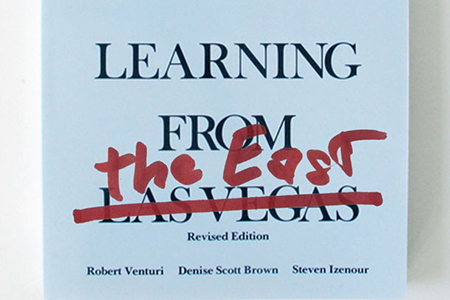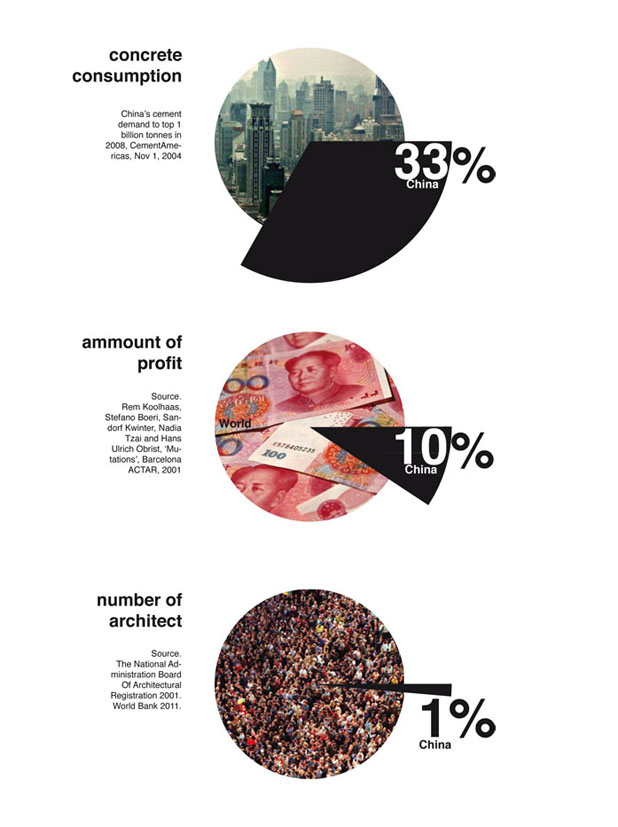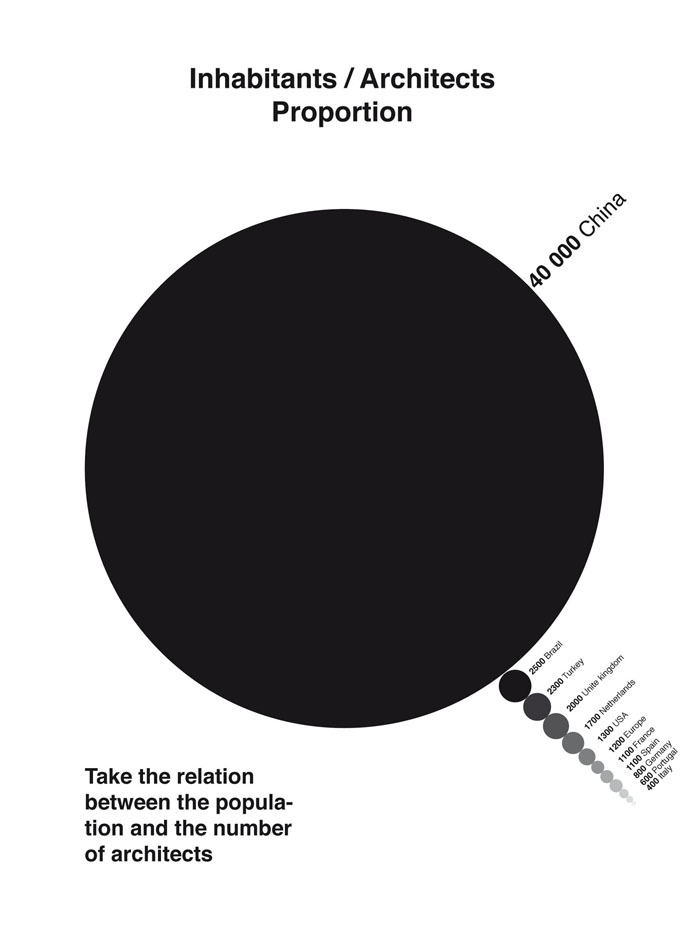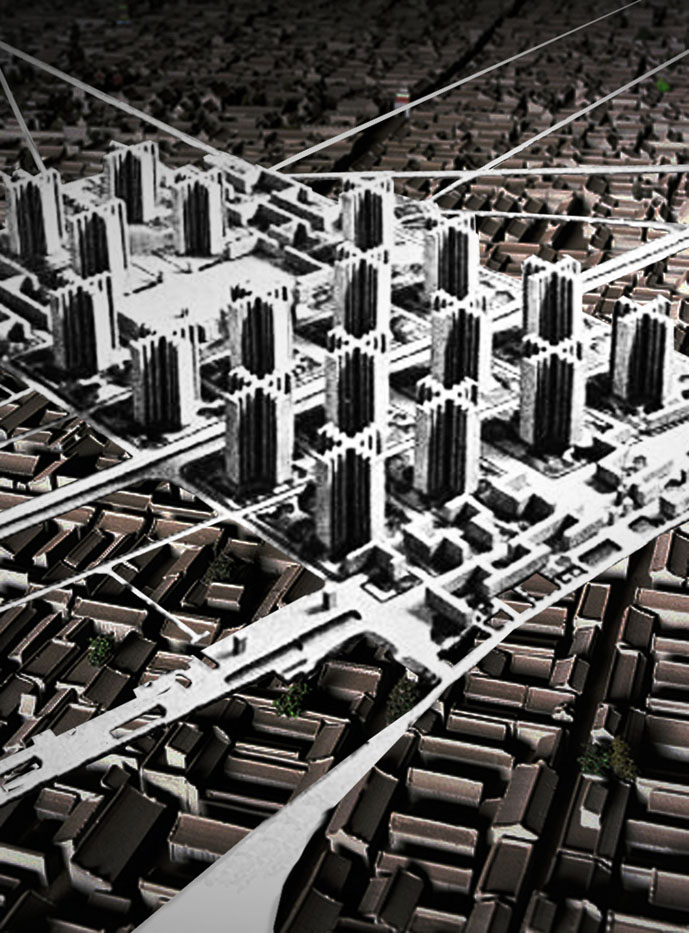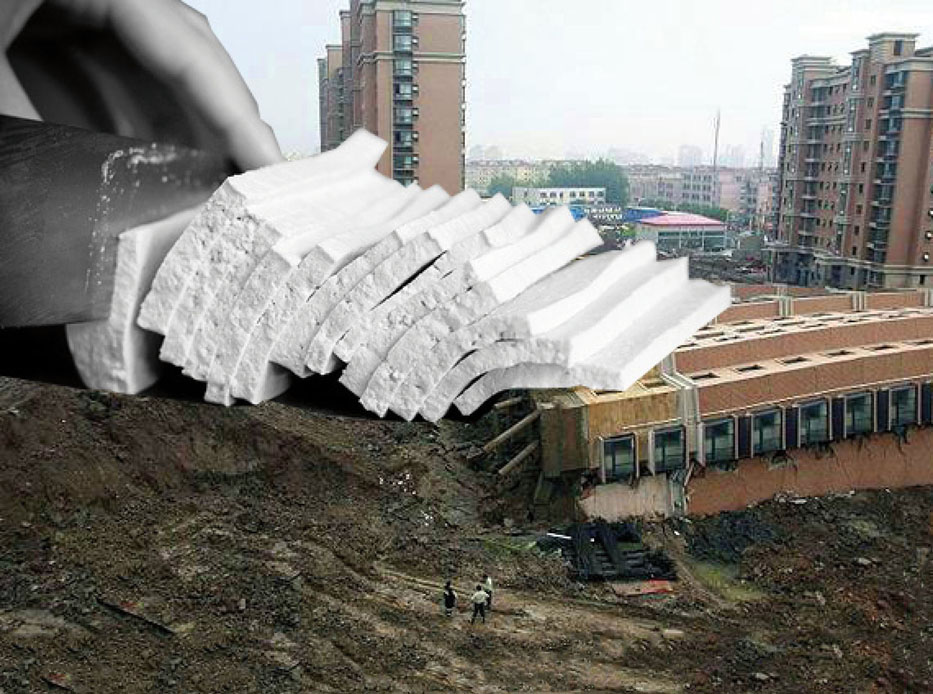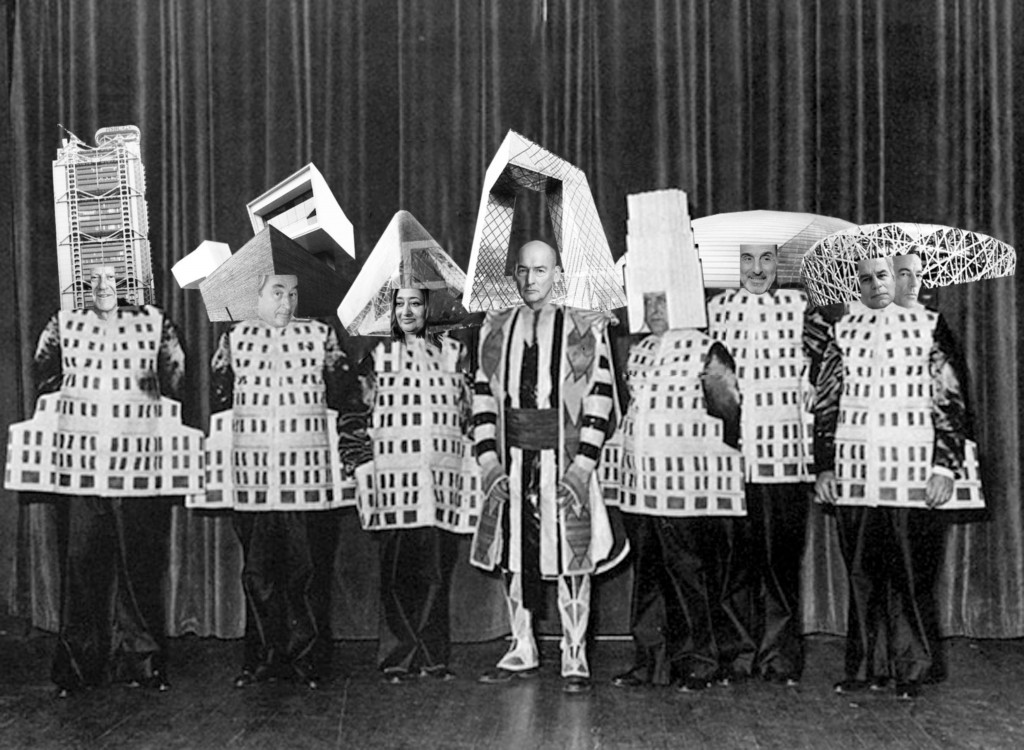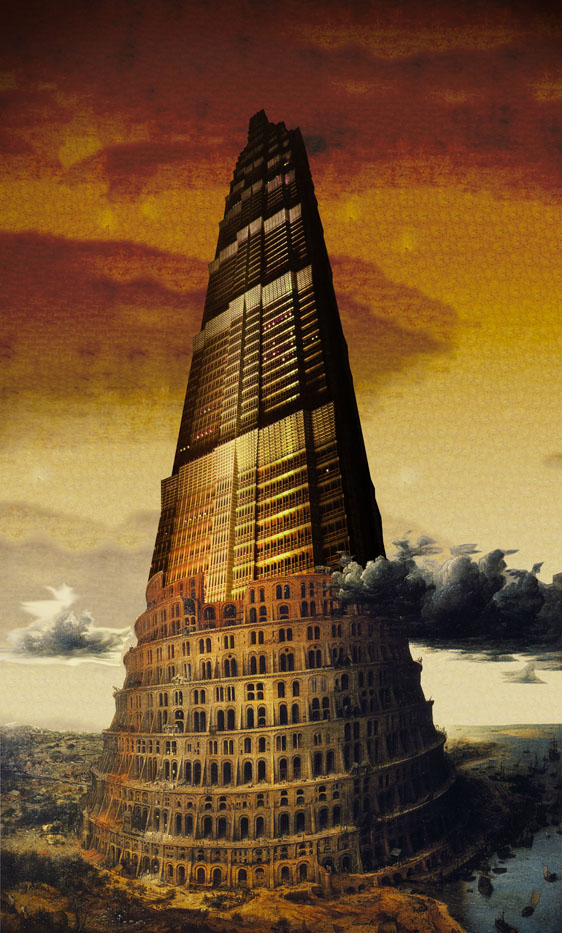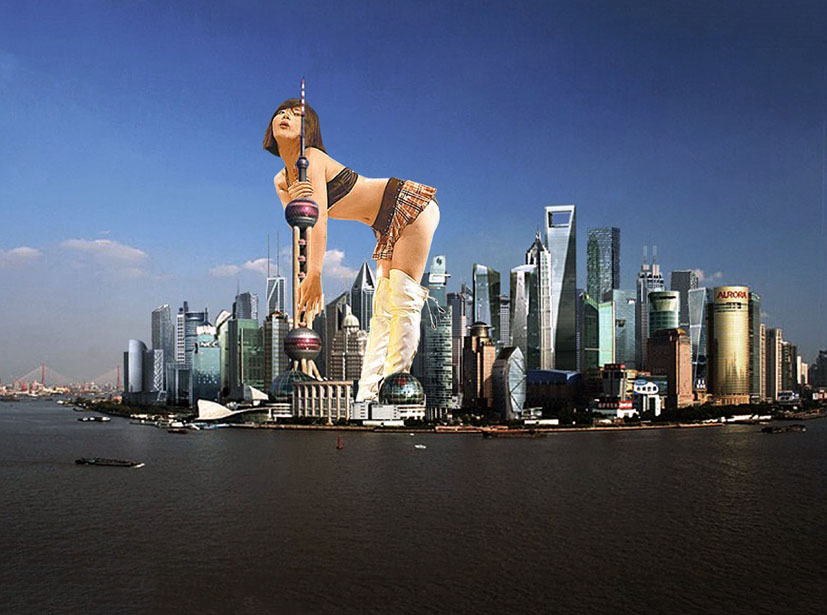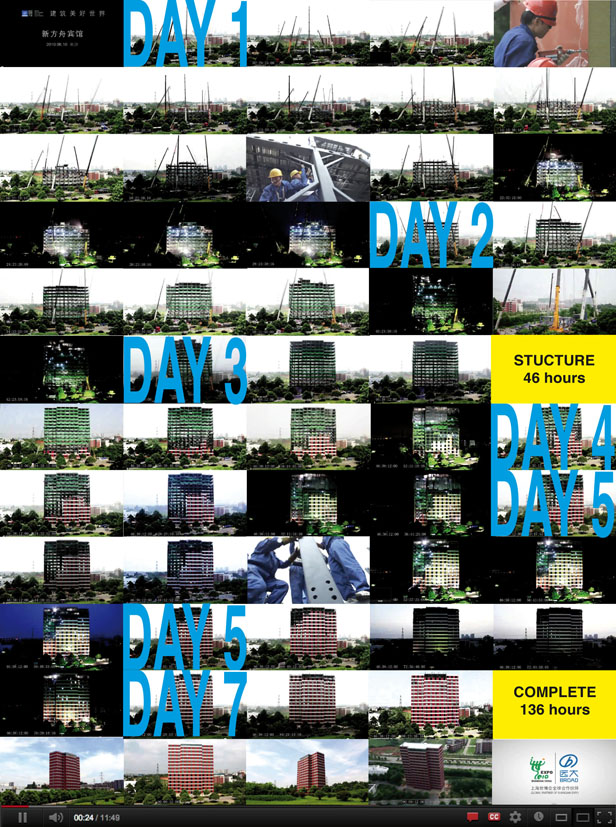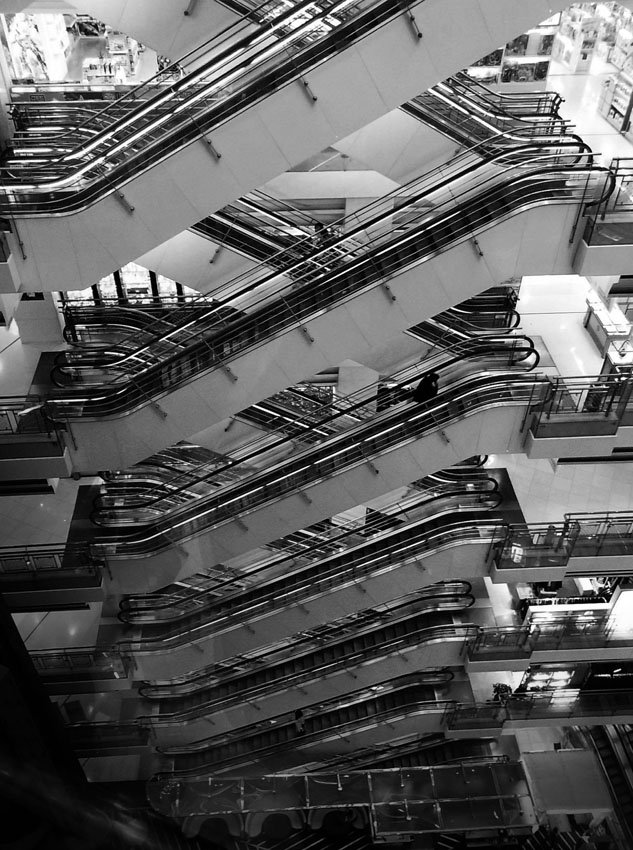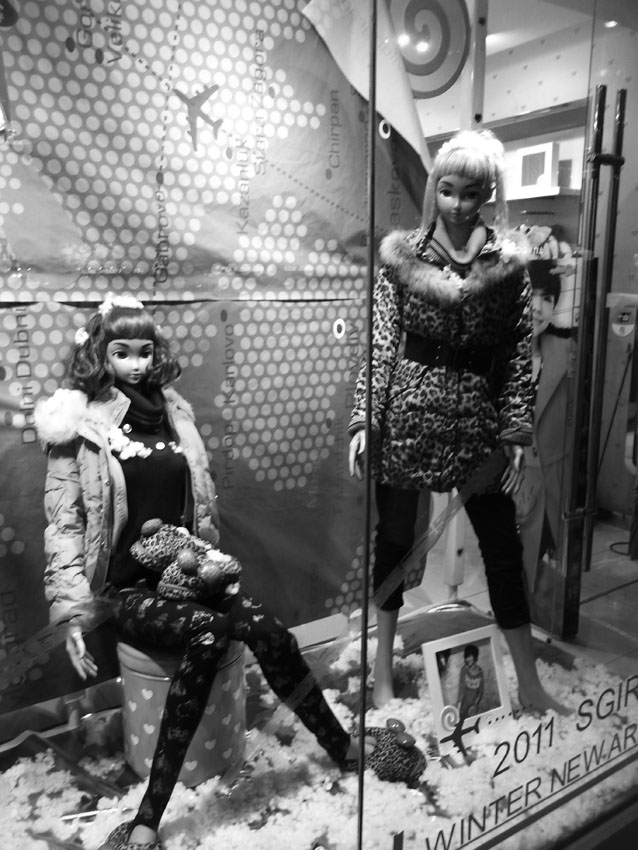di Pier Alessandro Rizzardi
AN OVERVIEW
NOWADAYS REALITY
The numbers of the urban development in Asia considering the European one are incredible: 5 times faster (in 20 years happened what has been done in Europe in 100 years), 8 times bigger (23 cities with more than 5 million people in China while only 3 cities in Europe) and this covers a population twice as big (731,000,000 in Europe 1,342,000,000 and in China). It’s intuitive as these data lead to a way to tackle the project completely extraneous to a Western architect.
Currently, the urban population exceeding the rural population rose up to 51%. It is estimated that this will reach 83% in 2035 when the process stabilizes. The urban population requires services and infrastructure. The design approach is thus based on the big numbers. One need only consider that the projects that are advertised in Europe as the CCTV Tower by Koolhass and opera house by Zaha Hadid are dozens or even hundreds of times much smaller than other projects in construction: infrastructure, construction of new cities, industrial areas, ports etc.. The number and size of projects strongly influence the way of making architecture.
In China, the face of the city is characterized by the demolition. The view is a huge construction site hidden behind the walls and billboards with renderings of what you will see in a few months. To quote Wang Shu, Pritzker Prize, only 10% of the historical buildings in China has survived to this day. Basically the reasons that can be found are two. The first is based on past history: the traditional architecture used wood as the main material for building. The result is then the practice to reconstruct the image of architecture with new materials. The second is based on the recent history: the Cultural Revolution used the cancellation of the past in order to build the new culture. The lack of historical urban tissue creates dynamics completely different from those found in Western cities. With the almost total demolition of historic parts of the cities the Asian society must constantly face with the concept of tabula rasa. This leads to the possibility of free development with a complete world to rebuild. The number of architects is extremely significant. The proportion of residents and architects is 40,000 to one, incredible if we think that Italy is raised to 400 people for an architect. The number is 100 times greater.
If you look at the data of Chinese architecture, we see the peculiarity of the Asian condition. The Chinese architects must be much more efficient than their Western counterparts to work.The volume of the use of reinforced concrete in China is 33% of the world total amount, the number of Chinese architects in the world is one hundredth of the total. The turnover instead stays to a tenth of the world average.In other words, one percent of architects to design the buildings and 33% of this must be done for one-tenth of the profit.
This creates the theoretical condition of Chinese architects and architecture of China. A Chinese unique phenomenon is the process of City-making. The state, the only landowner, rent the land to individuals allowing them to build. In this way the state receives funding from the private sector. This is what we call “planned capitalism”. The state government has absolute control, not only through the possession of the land, but also through the imposition of masterplan tightly regulated. The government cannot do anything else but planning, it doesn’t have an absolute power on architecture. The government defines a masterplan in which investors and architects formally define the buildings and then the shape of the city. The logic of profit creates cities where there are only homes, what the real estate market asks. Homes are sold as investments, and these remain empty for years. The Chinese real estate bubble grows, but for how long?
Today, the condition of Chinese architects imposes the reduction of both the design and construction time. The project is with limitless possibilities, it becomes mechanical instead as industrial production and not time is left to think about it. The design of a building in Shanghai can be taken, modified, shortened to 10 floors and reused in Hong Kong without radically changes. The speed of execution and the will to characterize the site generate examples such as One City Nine Towns in Shanghai, satellite towns in European style. After 1980, the Economic liberalization and the new freedoms gained stimulated people to seek what was lost in the Maoist period. Everything that comes from abroad is seen as innovation and freedom, a goal to aim. China wants to experience life in Western way and never mind if it is a copy of a far Europe style. Investors get the message and build copies of idealized European cities.
The fact to import Western styles and impaste to churn out buildings, creates a hybrid halfway between the one and the other culture. The architecture in China is Business. Real Estate is built, used, and when the investment has given all it can give more is being demolished to make way for a new investment. “Tou Fu Buildings” are buildings in which materials and technologies are sacrificed to lower production costs and speed up the execution time. No one escaped from this trap even the Archistar as Zaha Hadid Opera House Guangzhou experienced the consequences of such philosophy. The cultural upheaval of recent generations has resulted in a hybrid architecture, where profit directs the project. Large numbers of Chinese architectural theorem, the Olympics and Expo, the economic boom create opportunity and need to build.
CONTEMPORARY TRENDS
The architectural trends of recent years can be grouped by different types: International Architects (iconic architecture that aims at large-scale projects), Local Architects, the new Chinese generation (small-scale architecture and vernacular), background Architects (Architecture of a such extensive proliferation to constitute a phenomenon influential on the national architectural scene).
The Archistar entered in the Chinese architectural scene, supported and desired by the government. As it was Manhattan in New York nearly a century ago, China turns into a new stage in world architecture. This architecture is pointing up. Skyscrapers have a strong iconic impact: this is given by higher image and then economic returns. The city remains a “shopping window” for the modernization of the country, as Deng Xiaoping wanted Pudong in Shanghai. The “Manhattan of China.” China wants respect and visibility; the tendency of the government is toward recognizable, massive and iconic architectures seeking a world-wide recognition.
“Nostalgic Architects” pursuit the “Chineseness” in architecture trough the idea of rebuilding portions of the city in a traditional style. The old motto of Mao was “the new against the old”. Now is the old against the new, because the new has become old too fast.
The Cultural Revolution sought to eliminate the past. Now they rebuild as it could be without Cultural Revolution.
“Traditional Iconic Architects” use the way of the magnification in scale of images of the cultural tradition. They explicit architecture symbol putting an immediate icon on the city. Architects use traditional symbols like lanterns, fans, dragons, coins to instill in their buildings, the icon of “Chineseness.”
“The Architects of the New Generation” are composed by who have studied in leading universities of the United States. These architects are open to experimentation contaminated by Western notions. They reject the current architectural situation, creating a choice based on the purity of the tectonics, radical shapes, vernacular materials and simplified building technologies. If we compare the timelines of the Chinese and Western architecture, we see the existing time gap. Analyzing the current ways of doing architecture of the new generation of architects, you will notice many features in common with the architectural period of post-war Europe and the West. From New Empirism in Sweden, Neoexpressionismus German, but also i English Brutalism, Italian Neorealism to Brazilian Brutalism.After 50 years the themes of “After the Modern Movement” European come up for discussion in China today.
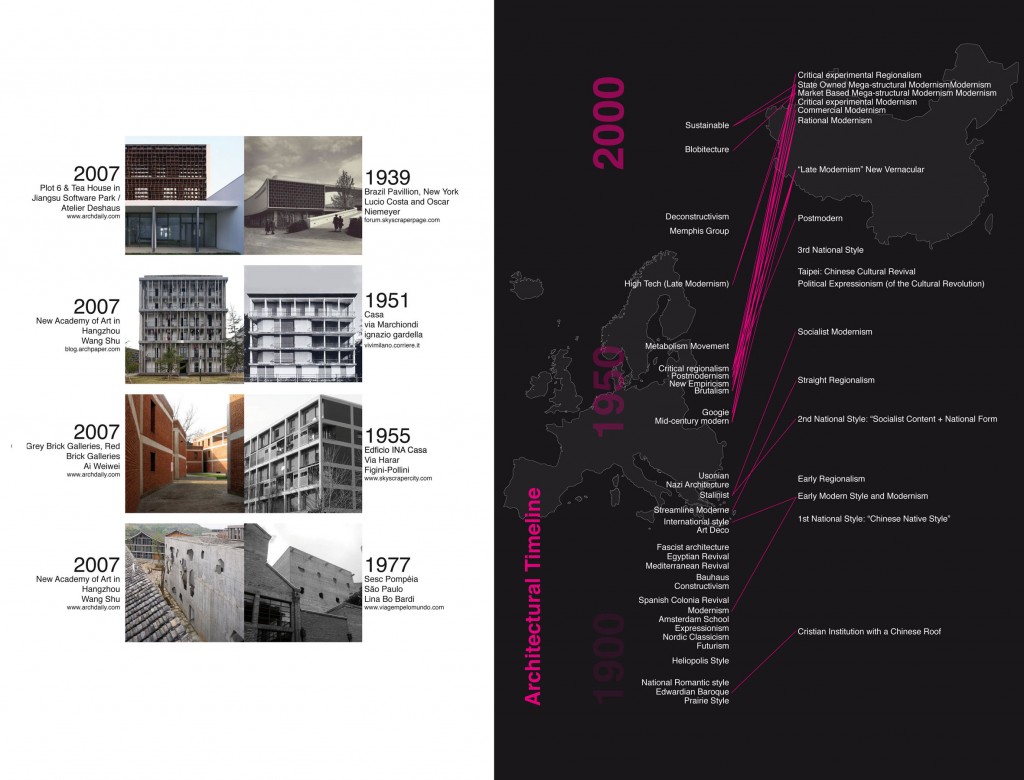
THE CONDITION OF THE CHINESE ARCHITECTURE
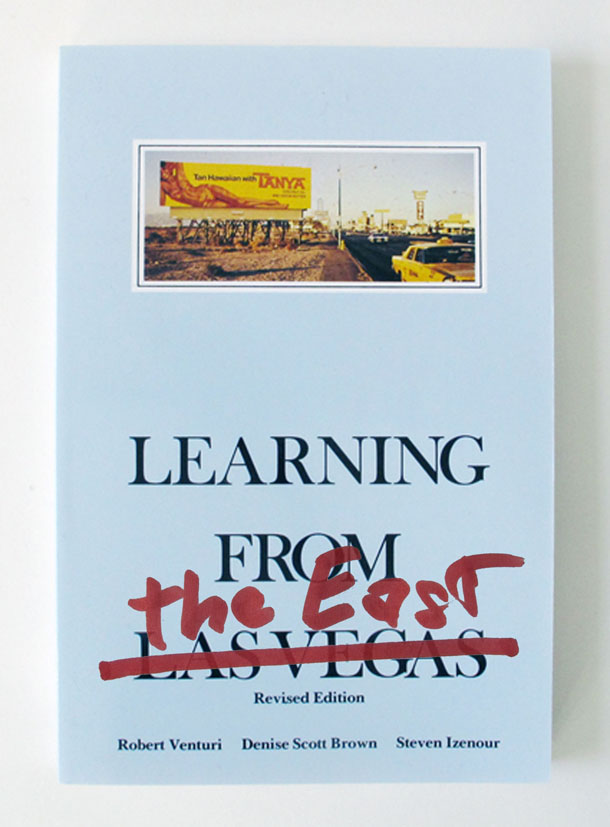
The rate of instantaneous composition implies an architecture in which the current image is just a tiny moment of his life. We understand that architecture can not be finalized but it is actually evolving. Megacities, as small towns, regenerate continuously. The system is dictated by the economic gain that does not earn or do not earn enough, which has changed to be put in a position to produce. In the cities you do not see buildings older than 10, years in some areas even 5. In this condition, the architecture generation is quick and it creates chaotic urban landscapes. The result is a city with not clear composition, but with a complex structure interesting to explore.
The architecture is related to a continuously changing environment that in facts generates the negation of the Western context. The project, in these conditions, is abstracting from any substance and it brings a picture evanescent, fragile and volatile. The current situation has created a condition in which anything can happen, as on a stage without scenery, naked and full of potential. This challenges the old method by which you assign functions to the space strictly defined.
The Chinese society is complex because it varies. The ethnic groups are different, with different cultures and customs and the languages (China has 292 living languages). The density is uneven: megalopolises, densified areas and large uninhabited territories. The climate changes the way of living for people, space and architecture. In China the territory is divided into 5 different climate zones from the Arctic to the tropical zone. Thus we see how the Chinese society is complex and diverse a cocktail that creates unpredictable situations.
Under these conditions, to work, the architecture has features that meet the needs of such a diverse society.
China is enormous in everything, but if we check, we realize that this bigness is special. Take two representative buildings of East and West as the Forbidden City and the Palace of Versailles. We immediately notice the difference. The Forbidden City consists of 980 buildings, autonomous, and a scheme that make the size of this building, with gaps of up to 90% of the area. The Palace of Versailles instead consists of 4 buildings, with 15% of voids. But even if we do not look at so famous and ancient examples, we realize that this feature is constantly repeated. Karaoke, gigantic palace, a universe composed of small “cells” which together forms the size of this place. Another place of modern use is the Internet Cafe, widespread phenomenon that illustrates the peculiarities of the Chinese new space, surrounded by invisible barriers such as headsets and screen. These represent the spatial bubbles that indicate small virtual realities that create the bigness of real space. The union of many small situations gives the bigness. This is translated into the simulation as sensitivity in the creation of human-scale spaces but connected to create a general sense of unity.
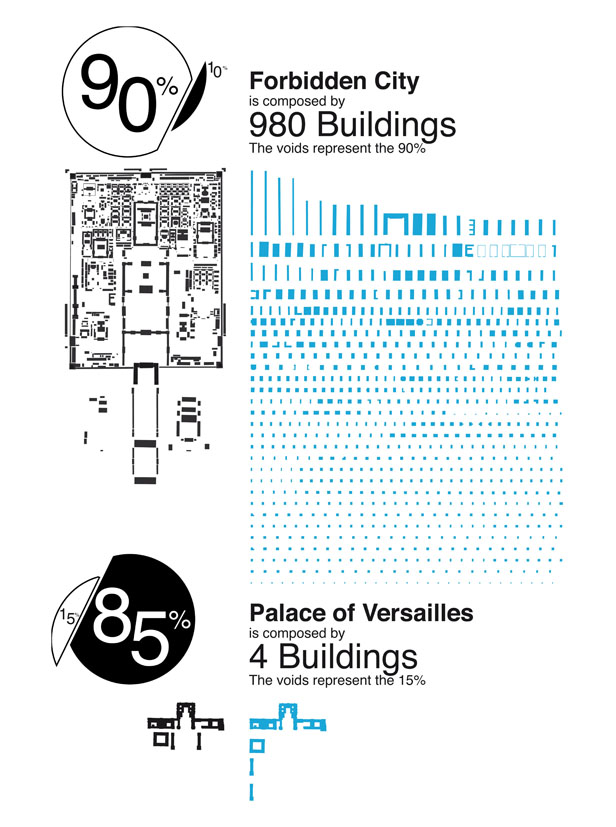 When we speak of Chinese space, we refer to a unique place. We compare again the Forbidden City and Versailles. Their gardens are structurally different. The Eastern Garden is a place that takes a basically natural landscape, is an artificially natural landscape. Instead Versailles is composed of geometric compositional structures completely artificial. It is here that stands out the basic difference between the two cultures. The East is based on Buddhist and Taoist philosophies that supports a balance between man and nature, in which the building open and fluid builds the link between architecture (man) and garden (nature). The Western idea is built on the concept of the superiority of man over nature, in which man must subject it to rules knowledge to control it. The visualization of this philosophy is the artificial composition and geometry of the western gardens and a solid architecture that is isolated in in its solidity.
When we speak of Chinese space, we refer to a unique place. We compare again the Forbidden City and Versailles. Their gardens are structurally different. The Eastern Garden is a place that takes a basically natural landscape, is an artificially natural landscape. Instead Versailles is composed of geometric compositional structures completely artificial. It is here that stands out the basic difference between the two cultures. The East is based on Buddhist and Taoist philosophies that supports a balance between man and nature, in which the building open and fluid builds the link between architecture (man) and garden (nature). The Western idea is built on the concept of the superiority of man over nature, in which man must subject it to rules knowledge to control it. The visualization of this philosophy is the artificial composition and geometry of the western gardens and a solid architecture that is isolated in in its solidity.
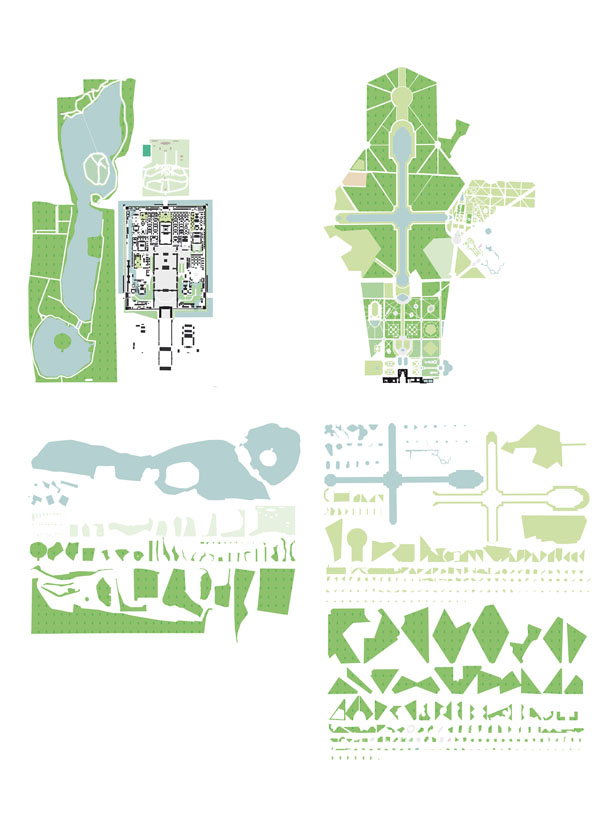 The symbolism in architecture, in China, is an element that is found in its entire history: from the traditional, modern to avant-garde. The symbol represents an indivisible root to the Asian culture.
The symbolism in architecture, in China, is an element that is found in its entire history: from the traditional, modern to avant-garde. The symbol represents an indivisible root to the Asian culture.
The classical relationship between architecture and nature does not seem to find more space and a sense of its existence. Replacing the bucolic nature and contemporary society, modernized, computerized, disintegrated, consumerist. Therefore, the new architecture relates to this new environment, interprets it and absorbs it as it was before with the nature. In the practical character of Eastern cultures the physicality of the built in its manifestation, becomes a mirror of the society around it.
THE CONDITION OF THE CHINESE ARCHITECTURE is symbolic; it is iconic; it is based on the permeability and on the fluid spaces in which the internal and external space joining together creating the equilibrium between the inside and the outside, between man and nature, between architecture and nature, between artificial and natural.
THE CONDITION OF THE CHINESE ARCHITECTURE is indefinite; it is changeable; it is spontaneous, the context seems to exist; it is varied and active as his society.
THE CONDITION OF THE CHINESE ARCHITECTURE aims to immensity but made by small situations.
THE CONDITION OF THE CHINESE ARCHITECTURE is the result of a whole: its relevance, its history, its cultural roots. If we want to understand what it means we have to immerse ourselves in it, only from the inside we can understand its logic and relate to it.
“Poet is the one to whom the difficulties inherent in his art bring ideas, – is not the one who the same difficulties remove them.” (Paul Valéry 1871-1945)
21 febbraio 2013
